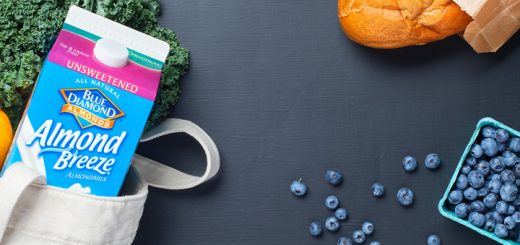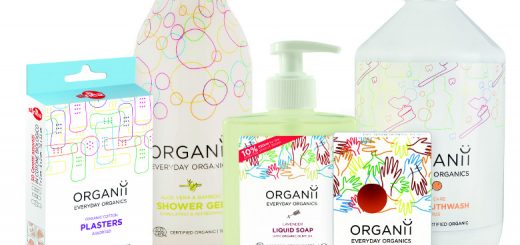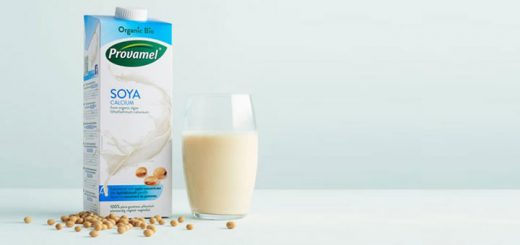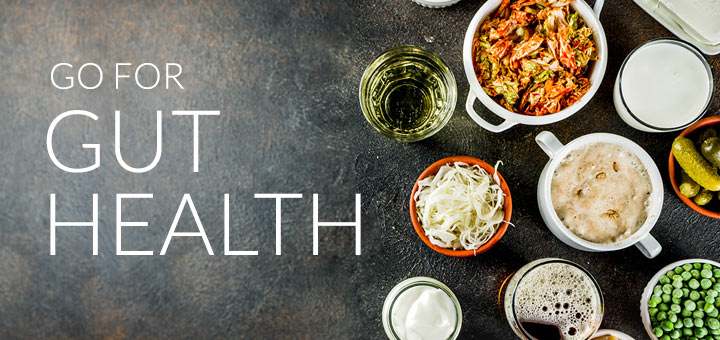
Foods to eat to help your gut health and let the good bacteria thrive
Health, wellbeing and fitness are always a hot topic. We all want to be healthier, fitter and live longer but it’s a complicated topic with much advice from the past turning out to be incorrect. One area which has been overlooked is the influence the bacteria within us have on our health, mood and also the type of food we crave.
The gut is a hugely complex part of the human body, but perhaps not the most glamourous part. Medical students tend to want to get into things such as studying the brain with neurology, leaving it to be overlooked in its importance in our health. This is changing as we realise there is far more to it than we first thought and we better understand the crucial role of the microbes living inside us. The microbiome is thought to play a part in regulating our weight; converting food we can’t digest into a wide range of hormones and chemicals which can control our mood, appetite and general health. A healthy biome may reduce anxiety and depression. The bacteria in you can protect our guts from invaders, teaching and regulating our entire immune system.
In the last 50 years we’ve seen huge increases in autoimmune diseases, everything from inflammatory bowel disease to type 1 diabetes which are primarily caused by the immune system getting out of control. Improving your gut health and microbiome can reduce the impact of these diseases. We have evolved over millions of years with these bacteria inside us, but in modern times the types and concentration of bacteria has changed, potentially with all sorts of negative health consequences.
The gut is an extension of our sensory system, in our intestines is effectively a thin layer of brain. The entric system is made up of over 100 million neurons (more than in a cat’s brain!). This is because it is in constant communication with our brain, but the messages we get to our brain are strongly influenced by the bacteria in our gut. These bacteria help us digest certain nutrients, they live in their own ecosystem with different types of bacteria competing with each other in our guts. Different kinds of bacteria will thrive on certain types of food, and through the neurons in our gut they send messages to our brain as to what food we need, and therefore what food we crave. If we eat the wrong types of food, we can encourage the growth of bacteria who thrive of these unhealthy foods, which then means the messages to our brain are influenced by the types of bacteria who thrive off unhealthy (to us) food and so we crave it more. Having the right kinds of bacteria inside us can have a huge impact on our overall health.
The average healthy gut will have more than 50 trillion organisms and over 1000 different species!
– Source: Dr Michael Mosley, Clever Guts Diet (2017)
How to help
So what can you do to improve your gut health and microbiome? Well a lot of it unsurprisingly is down to what we eat. Many people nowadays eat a lot of processed foods with little variety and much of the nutrition taken out of them in the process of making them. We have gone to a more ‘beige’ diet of unhealthy, highly processed foods topped off with a selection of high sugar snacks and drinks. It may sound slightly strange but changing to a more colourful diet can make you much more healthy, (we must point out colourful sweets don’t count!), having more variation in the vegetables you eat will help you get all of the different nutrients you need for a healthy diet. Simply eating more colourful foods may sound a bit simplistic but it’s an easy way to get an idea about how healthy your diet is. For example, greens such as lettuce, chard and kale are a great source of minerals such as magnesium, manganese and potassium; while yellow, red and orange fruit and vegetables usually contain carotenoids (choose carrots, tomatoes, peppers).
To eat more healthily in an effort to improve your gut health, first there is the Prebiotic side, and also the Probiotics. You may have heard of these two terms but perhaps not known they are different. We’ll start with the prebiotics side, this the food you eat which will support the ‘good’ bacteria in your gut and help them thrive and make you more healthy.

There are a huge number of different foods which can benefit your microbiome, these are just a few:
Oily Fish
Eating oily fish helps increase the levels of bacteria associated with butyrate which plays a key role in maintaining gut health. Not all fish falls into this ‘oily fish’ category, the key ingredient is omega 3, white fish such as cod don’t contain much omega 3 fatty acids so don’t provide anything like the same benefits (although still a good source of protein). Some examples of oily fish would be sardines, salmon and mackerel. If you don’t eat fish you can find omega 3 in walnuts, flaxseeds and hemp oil (although the levels of omega 3 are less than in oily fish).
Cocoa
Yep, that’s what you find in chocolate! Although sadly this doesn’t mean you can now gorge on chocolate to improve your health. The reason chocolate can be so appealing and addictive is because it has the perfect ‘50:50’ ratio (which you’ll also find in ice cream and doughnuts) – the ratio of the calories within it, half of them being from sugar and half from fat. This is the same ratio as the first food we ever consume, breast milk, so we are perhaps wired to respond to this. If you think you think of foods which are high in sugar, but zero fat such as melon, or the other way around with steak, being high in fat but low in sugar, these don’t have the same moreish appeal as something like chocolate.
The good news is through you can try dark chocolate, this is much less moreish and usually high in cocoa. Whilst chocolate may not be good for you it is not the cocoa which is bad for you, but the excessive sugar levels, so try to pick chocolate with a high cocoa content and less sugar. Cocoa is broken down in the gut to produce nitric oxide which expands arteries and good for cardiovascular system. Cocoa also contains flavonoids and polyohenols which are good for gut bacteria. Try a high quality source such as Aduna Super Cacao which has 8x the usual flavanol content.
Olive Oil
Extra virgin olive oil is a fantastic addition to add a bit of flavour to your food but it is also one of the healthiest fats you can consume as it’s high in polyphenols and antioxidants which are good in dampening down inflammation, particularly in the gut. Also if you eat this, you are less likely to crave processed fat and sugar later on in the day.
Colourful fruit and vegetables!
To elaborate more on the recommendation to eat more colourful food and show how it really is the colours that matter here are a few which will help your gut health:
Greens – leafy greens such as lettuce, kale and spinach – These are a great source of minerals such as magnesium, manganese and potassium.
Blue and purple – Blackberries, red cabbage, blueberries and aubergines – These foods get their colouring from a flavonoid called anthocyanins, eating a good level of these flavonoids can encourage the growth of good bacteria such as Bifidobacterium and lactobacillus.
Yellow, red and orange – Carrots, tomatoes, bananas, peppers and squash – These are rich in carotenoids which can be converted to retinol, an active form of Vitamin A.
White – onions, garlic, shallots and leeks – These are rich in allyl sulphur compounds and appear to be quite effective at killing the bad microbes in your gut.
Turmeric
Turmeric is a spice which can easily be added to a variety of foods, you’ll probably think of making a curry with it but it is great to sprinkle on vegetables before cooking or adding to salad dressing. Turmeric contains curcumin which inhibits the growth of bad bacteria, parasites and pathogenic fungi and also protects the wall of the intestine. Many middle eastern recipes contain turmeric if you need some inspiration!
Inulin
Inulin is one of the most effective prebiotics which can’t be digested but encourages the growth of good bacteria and turns this prebiotic fibre into chemicals like butyrate. Inulin is available as a powder if you want to easily add it to your diet but you’ll also find it in onions, garlic, asparagus and leeks as well as dandelion greens.
Good Sources of Fibre
Fibre is hugely important in our diet and essential to keep the good bacteria well fed. Fibre is difficult for your body to digest which is where your gut bacteria come in. It also has the bonus of making you feel fuller. You’ll find fibre in fruits, but don’t think this means you can just drink a fruit juice to get your fibre, you’ll need to eat the fruit to get that (unless of course you make a smoothie from the whole fruit), good sources of fibre are fruits like apples, vegetables such as carrots and sweetcorn, peas pulses and beans. Other useful sources are:
Barley – a great prebiotic as it contains lots of beta-glucan which promotes the growth of good bacteria. Oats also contain large amounts of beta-glucan, try to get less processed oats to get the most from it.
Flaxseeds are a good source of omega 3 and is also rich in insoluble fibre which can feed your microbiome.
Finally seaweed is full of fibre, can help reduce inflammation and can help promote bacteria which produce fatty acids like butyrate to encourage the growth of mucous lining.
Probiotics
Whilst prebiotics act to help the existing bacteria in your gut thrive, probiotics will actually add good bacteria to your gut and hopefully they will stay and do you some good.
Yoghurt
Yoghurt is one of the best probiotic sources around. Homemade fresh yoghurt is much nicer than shop bought yoghurt and is much richer in bacteria like lactobacillus. You can add whatever you like on top of your yoghurt to add a bit of taste or add some flaxseeds or nuts to give you some extra health benefit. A great breakfast which helps to keep you full, yoghurts with live cultures have been shown to help conditions such as antibiotic-associated diarrhoea (good to eat if you have been on a course of antibiotics to re-establish your microbiome and ensure it comes back healthy), IBS and constipation. There are a number of kits available, such as Easiyo, to make it even easier (and more cost effective!) to make your own yoghurt at home.
Cheese
The benefits from cheese can vary greatly, most processed cheese will contain virtually no bacteria, so it’s important to look for live and active cultures on the labels. A lot of good bacteria can be found in mozzarella, cheddar, cottage cheese, feta and blue cheeses.
Fermented Foods
Fermented foods have been created by microbes converting sugars into other compounds. Fermented foods have become popular in recent years as they contain high levels of good bacteria. Examples of fermented foods are wine, cheese, yoghurt as already mentioned but also things like sauerkraut, kefir, kimchi and apple cider vinegar.
Fermented Drinks
There are a number of foods and drinks available now that have been created to help you build up your good bacteria such as Captain Kombucha drinks, each bottle fermented with their own probiotic culture.

Probiotic Capsules
To make it easier to get the cultures you need there are plenty of supplement capsules available to do just that:
Vega Acidophilus + Bifidus – 60 Caps. Full of healthy prebiotics (which feed those friendly bacteria), probiotics and antioxidants.
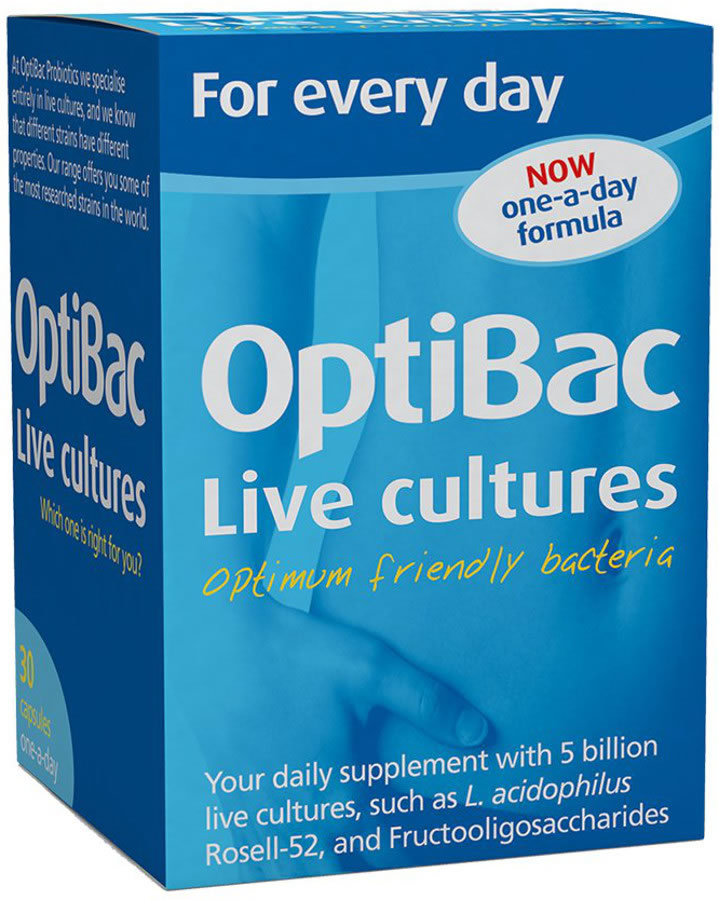
Optibac Probiotics For Every Day – 30 Capsules. Each capsule provides 5 billion live probiotic microorganisms and 88mg of prebiotic fibres, which help maintain immunity, energy levels and digestive health.
Source: Dr Michael Mosley, Clever Guts Diet (2017). ISBN-10: 1780723040


